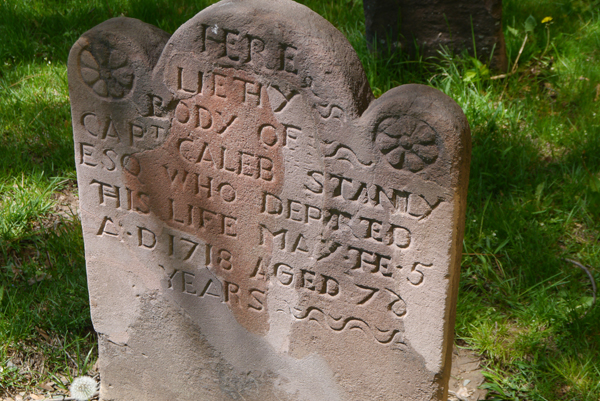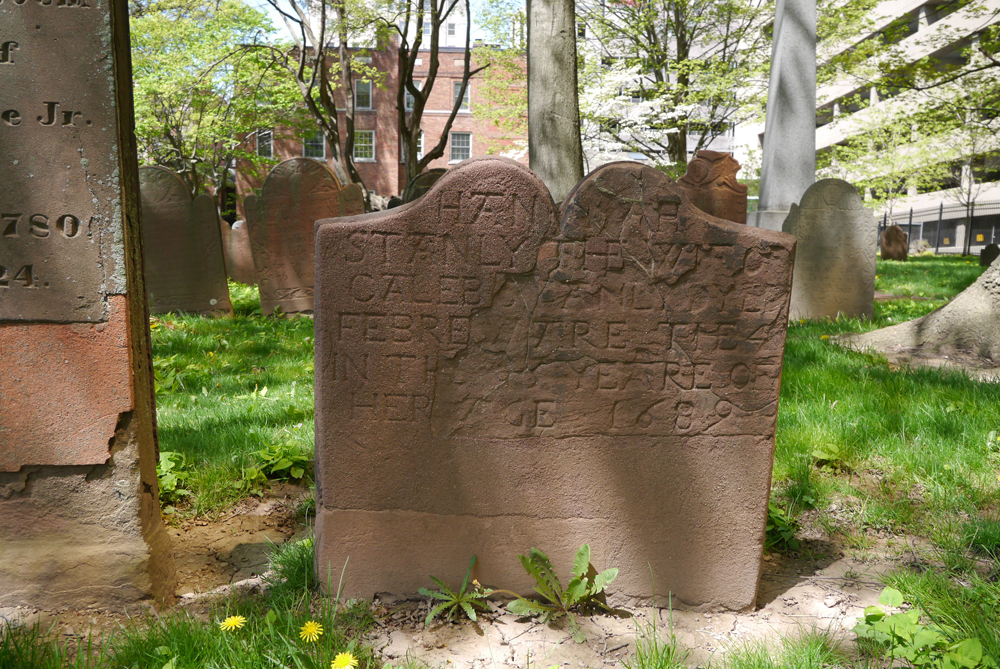
Many family names disappeared quickly in my family tree, but two stand out through several generations: Bagg and Stanley. Both of these families lived in colonial New England from the mid-1600s to the 1790s. The name Stanley disappeared from my line in 1780 when Pamela Stanley married Phineas Bagg. After her death, Phineas Bagg moved to Canada. Born four generations later in Montreal, my grandmother’s maiden name was Bagg.
I have already covered the colonial generations of the Bagg family in some detail on this blog, and I do not intend to do the same with the Stanley family. They are well known and have been thoroughly researched, starting with a book compiled by Israel P. Warren in the 1880s, The Stanley Families of America as descended from John, Timothy and Thomas Stanley of Hartford, CT, 1636. The best known descendants of my ancestor Timothy Stanley (through his daughter Elizabeth) are undoubtedly George H. W. Bush and George W. Bush, both former presidents of the United States.1
I have posted an article outlining what little I know about Pamela Stanley.2 In my next post I will pull together more details about the immigrant Timothy Stanley and his wife Elizabeth. Meanwhile, this article outlines the four generations in between Timothy and Pamela in my line of the Stanley family.
Timothy Stanley (1603-1648) and his wife Elizabeth (c 1602-1678) came from Tenterden, Kent, England, and, in 1636, they settled in Hartford, CT.3 They were part of a wave of Puritans fleeing England because they wanted to reform the Church of England. In New England, the Puritans hoped to establish “a city upon a hill” where they could put their beliefs into practice.
Five of Timothy and Elizabeth’s seven children were born in New England and grew to adulthood. Their fifth child was my direct ancestor, Caleb Stanley (1642-1718).4 In 1688, Capt. Caleb Stanley was appointed the important task of keeping Hartford’s ammunition safe. He was married three times: 1) Hannah Cowles, daughter of John Cowles; she died in 1690, age 44; 2) Mrs. Sarah (Foster) Long, who died 1698, age 44; 3) Mrs. Lydia (Cole) Wilson, died 1732.

Caleb Stanley and Hannah Cowles had a number of children, but most died as infants. My line of the family goes through Caleb’s and Hannah’s fifth child, Caleb Jr.. Caleb had two more children with his second wife.
Caleb Stanley Jr. (1674-1712), of Hartford, was said to be one of the most distinguished men in the colony. He was secretary of the colony from 1709 until his death three years later, and he was appointed surveyor for Hartford County in 1700. He was also a wealthy man: when Caleb died, the inventory of his estate totalled £774.
He was married to Hannah Spencer in 1696. They had no children and she died six years later. In 1704, he married Abigail Bunce, daughter of Thomas and Susanna (Bull) Bunce, and they had four children. Their oldest son, Timothy, was my direct ancestor.
Timothy Stanley (1705-1787) inherited his father’s homestead in Hartford and sold it in 1742 when he moved to Harwinton, CT. By 1781, he was living in Wethersfield, CT. He married Mary Mygatt in 1729 and they had eight children, seven of whom grew to adulthood. Mary Mygatt died in 1786 at age 78, and Timothy died the following year, age 83.
Both Timothy and Mary were said to “own the covenant,” meaning they were bound to God and one another through a covenant. The covenant, a contract that rested on consent and mutual responsibilities, was an important aspect of the Congregational Church at this time.
Their eldest son, Timothy Stanley Jr, born in 1730, lived near Litchfield, CT and appears to have been a clothier. He married Mary Hopkins of Harwinton in 1754 and they had eight children. Mary Hopkins probably died around 1770. During the American Revolution, Timothy Stanley Jr. enlisted with Capt. Beebe’s regiment in 1776, and he died on a British prison ship in New York Harbour.
Their fourth child was my four-times great-grandmother Pamela Stanley, born in Litchfield, CT in 1760. She married Phineas Bagg in Pittsfield, MA in 1780 and probably died in Pittsfield around 1793.
All photos by Janice Hamilton, May, 2018.
Sources:
- Gary Boyd Roberts, compiler, Ancestors of American Presidents, 2009 Edition, Boston: New England Historic Genealogical Society, 2009.
- Janice Hamilton, “The Elusive Pamela Stanley,” Writing Up the Ancestors, Sept. 28, 2018, https://www.writinguptheancestors.ca/2018/09/the-elusive-pamela-stanley.html).
- Leslie Mahler, “Re-Examining the English Origin of the Stanley Brothers of Hartford, Connecticut: A Case of Invented Records,” The American Genealogist, vol. 80, July, 2005, p. 218. www.Americanancestors.org, accessed July 24, 2013.
- Israel P. Warren, compiler. The Stanley Families of America as descended from John, Timothy and Thomas Stanley of Hartford, CT, 1636. Portland, Maine: printed by B. Thurston & Co., 1887. This book serves as the main source of this article.
